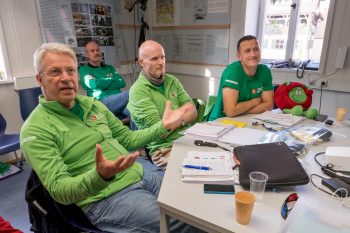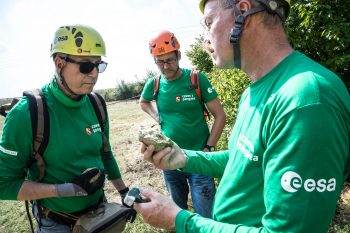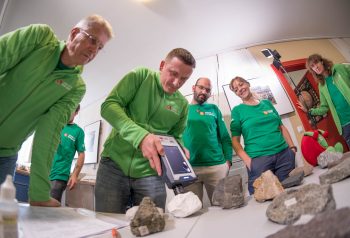Veteran ESA astronaut Thomas Reiter has spent more days in space than any other European astronaut to date. After two missions and 350 days in orbit, he joins Pangaea’s geology training course with a wealth of operational expertise. With just one week of training behind, Thomas discusses why he will never look at the rocks the same way again.
I became an astronaut nearly three decades ago. In preparation for my missions, I needed to learn about various scientific fields: physics, materials science, medicine and biology, to name just a few. The list of experiments was long, but geology was not yet part of the list.
This is the first time I am exposed to geological training. It is all new, but at the same time it is extremely exciting for me to understand the similarities and differences between celestial bodies. What makes our planet so unique? What is the story behind the rocks? Where and how did they form?
During our first trip to the Ries impact crater in west Bavaria, Germany, I could already put my recently learned skills and knowledge into practice. I was able to spot very interesting rock formations that told me an exciting ancient story.
There we stood, about 20 metres away from a wall. From the distance we could barely appreciate some rough structures, and started describing it using specific geology vocabulary. As I came closer to the surface of the wall, I noticed all of a sudden a little dark spot on the side.
That singularity made the surface more interesting to look at. It told me a story and gave me additional information about what happened when a huge asteroid impacted the area 15 million years ago.
I think I will never look at the rocks the same way again.
The future
Pangaea is clearly a streamlined course, full of synergies. Science and operations have to work together and this is where I hope to contribute with my feedback.
Space technology, protocols and means of communication are constantly evolving for missions away from Earth. I have learned this during my spaceflight career – between my mission to the Mir space Station (1995) and the next one to the International Space Station (2006) lots of things changed.
This is why it is so important to optimise the exchange between space explorers on the surface of another planet and the scientific teams on ground. We are developing and testing new ways of interaction between astronauts, mission developers and scientists. High-resolution live video, audio feedback and date from scientific instruments are part of the future of lunar exploration.
Let’s make it better, as we are moving further away from Earth.
Thomas Reiter
ESA interagency coordinator and advisor to the Director General




Discussion: one comment
Sehr geehrter Herr Reiter,
ist es möglich, Ihnen zum Pangäa-Projekt und der der Station Bletterbach einige Fragen per E-Mail zu stellen? Ich erstelle als freier Journalist gerade einen Beitrag über das Thema und würde mich sehr über eine Rückmeldung freuen.
Mit freundlichen Grüßen